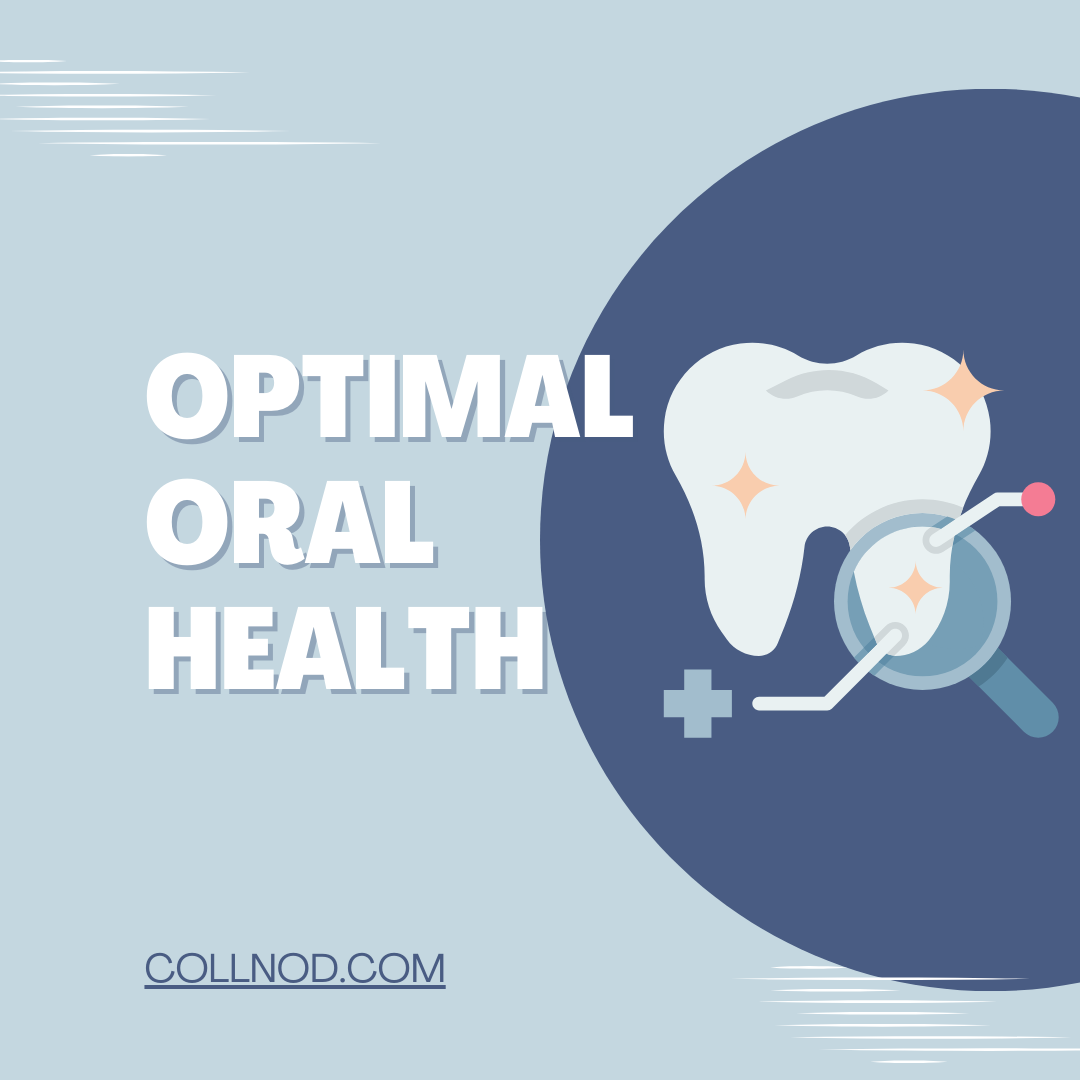
The Journey of Helping Patients to Achieve Optimal Oral Health
Click here to know more.
Optimal oral health needs to be supported by collaborative efforts from both the dental professional and the patient. It's a journey that consists of learning, preventing, treating promptly, and advising patients continuously for healthy teeth and gums throughout a person's life. Let us examine in detail all the steps for helping patients achieve good oral health and maintenance.
1. Initial Evaluation and Diagnosis:-
a. Full Oral Examination:
Medical and Dental History: Background information about the patient's past medical and dental experiences, his present health status, medications taken, and lifestyle habits.
Clinical Examination: It involves a thorough examination for teeth, gums, tongue, throat, and other tissues of the oral cavity for decay, disease, and evidence of abnormality.
Diagnostic Imaging: This may include X-rays, CT scans, and other imaging modalities to identify pathologies that cannot be detected on clinical examination, such as cavities present interproximally, loss of bone, and impacted teeth.
Periodontal Evaluation: This consists of examining the health status of the gums and supporting structures for any signs of periodontal disease.
Oral Cancer Screening: Any suspicious lesion or alteration in the oral tissues is an indication of malignancies.
b. Risk Assessment:
Caries Risk: This is an assessment of factors contributing to tooth decay, such as diet, oral hygiene practices, saliva flow, and past history of cavities.
Periodontal Risk Assessment: Identification of the risks of gum diseases, taking into account smoking, diabetes, genetics, and oral hygiene.
Orthodontic Evaluation: Mis-arrangement of teeth or malfunction of the bite that may call for corrective therapy.
2. Individual Treatment Planning:-
a. Development of the Comprehensive Treatment Plan:
Prioritization of Needs: The urgent problems, such as infections or serious decay, are addressed first; this is followed by the preventive and restorative treatment.
Setting Goals: Sets short- and long-term oral health goals in conjunction with the patient.
Multidisciplinary Approach: A need for professionals such as orthodontists, periodontists, or oral surgeons, as the case may be, for comprehensive care.
b. Patient Education and Involvement:
Explain Conditions: Assuring that the patients are aware of their status in terms of oral health, the implications of different conditions on them, and the need for the various proposed treatments.
Treatment Alternatives: Outlining the various modalities of treatment, its benefits, risks, costs, and timelines, all aimed at enabling a patient to make an informed decision.
Motivational interviewing involves engaging patients in conversations that promote positive behavior changes and enhance the adherence to treatment.
3. Implementation of Preventive Care:-
a. Professional Cleanings and Maintenance:
Dental Prophylaxis: This involves cleaning the teeth regularly to remove plaque and tartar buildup on teeth, thereby preventing caries and periodontal diseases. Fluoride Treatments: The topical application of fluoride strengthens tooth enamel, promoting its resistance to decay. Sealants: Applying a protective coating to the chewing surfaces of molars prevents the onset of caries, particularly in children and adolescents.
b. Oral Hygiene Instruction:
Brushing Techniques: Advice on proper methods and frequency of brushing with instructions on suitable toothbrushes and toothpaste;
c. Flossing Education: Demonstrate flossing techniques on how to clean between the teeth properly.
d. Interdental Cleaning Aids: Introduce the patient with water flossers, interdental brushes, and tongue cleaners.
e. Nutritional Counseling
Dietary Recommendations: Advising the patient on food recommended for good oral health and those likely to cause decay and gum disease.
Sugar Intake Management: Educating about sugary and acid rich foods and drinks regarding dental health.
f. Modifying Lifestyle
Tobacco Cessation: Providing resources and facilitation to quit smoking or tobacco products by the patient.
Dry Mouth Management: Identifying xerostomia inducing conditions and recommending moisture maintainers for the mouth.
4. Restorative and Corrective Treatments:-
a. Dental Restorations:
Fillings: Filling of cavities with composite resin, amalgam or ceramic material.
Crowns and Bridges: Functional and aesthetic restorations of mutilated or missing teeth.
Implants: Artificial teeth, fixed into the jawbone, to replace the lost ones and resemble natural teeth.
b. Periodontal Treatments:
Scaling and Root Planing: Deep cleaning procedures for the treatment of periodontal diseases by removing plaque and tartar from under the gums line.
Gum Surgery: Surgical corrections in cases of advanced periodontal diseases, gum recession, or aesthetic purposes.
c. Orthodontic Interventions:
Braces and Aligners: Realigning misplaced teeth and irregularities in the bite for both function and aesthetic enhancement.
Retainers: Holding teeth in place after active treatment is complete, which gives patients the long-term results they desire.
d. Endodontic Procedures:
Root Canal Therapy: Saving natural teeth from extraction because the tooth pulp has become infected or damaged.
e. Prosthetic Solutions:
Dentures: Constructing removable replacements for missing teeth to improve function and appearance.
Maxillofacial Prosthetics: Restoring damaged tissue structures of the face caused by traumatic injury, disease processes, or congenital issues.
5. Ongoing Monitoring and Support:-
a. Regular Check-ups:
Scheduled Visits: Suggest visits every six months or a year to ensure the smooth flow of dental health and to detect defects in the initial stages.
Monitoring Progress: Determine the effectiveness of the given treatment and modify it if need be.
b. Reinforcement of Education:
Continuous Guidance: Providing education for correct practices in oral hygiene and promoting reminders to the patients.
Behavioral Support: Enabling and motivating patients to follow healthy practices by providing them with encouragement and tools as required.
c. Patient Feedback and Engagement:
Open Communication: Provide an environment where the patient should feel free to discuss their concerns and experiences.
Satisfaction Surveys: Collating feedback for services and patient care experience for improvement.
d. Community Outreach:
Public Health Initiatives: The dental team has volunteered services and participated in programs spreading oral health awareness and delivering services to under-served populations.
School Programs: Educating children and adolescents about the importance of oral hygiene from a tender age.